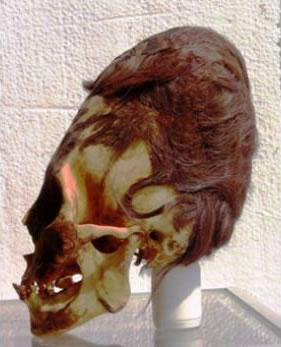NASA is inviting the public to help astronomers discover embryonic planetary
systems hidden among data from the agency's Wide-field Infrared Survey Explorer
(WISE) mission through a new website, DiskDetective.org.
Disk Detective is NASA's largest crowdsourcing project whose primary goal is
to produce publishable scientific results. It exemplifies a new commitment to
crowdsourcing and open data by the United States government.
Youtube Override:
Take a tour of DiskDetective.org with Goddard
astrophysicist Marc Kuchner, the project's principal
investigator.
Image Credit: NASA's Goddard Space Flight
Center
Feature Link:
"Through Disk Detective, volunteers will help the astronomical community
discover new planetary nurseries that will become future targets for NASA's
Hubble Space Telescope and its successor, the James Webb Space Telescope," said
James Garvin, the chief scientist for NASA Goddard's Sciences and Exploration
Directorate.
WISE was designed to survey the entire sky at infrared wavelengths. From a
perch in Earth orbit, the spacecraft completed two scans of the entire sky
between 2010 and 2011. It took detailed measurements on more than 745 million
objects, representing the most comprehensive survey of the sky at mid-infrared
wavelengths currently available.
Herbig-Haro 30 is the prototype of a gas-rich young
stellar object disk. The dark disk spans 40 billion miles in this image, cutting
the bright nebula in two and blocking the central star from direct view.
Volunteers can help astronomers find more disks like this through
DiskDetective.org.
Image Credit: NASA/ESA/C. Burrows (STScI)
Debris disks, such as this one around the bright
star Fomalhaut, tend to be older than 5 million years, possess little or no gas,
and contain belts of rocky or icy debris that resemble the asteroid and Kuiper
belts found in our own solar system. The radial streaks are scattered
starlight.
Image Credit: NASA/ESA/UC
Berkeley/Goddard/LLNL/JPL
Marc Kuchner, the principal investigator for
DiskDetective.org (left) and James Garvin, the chief scientist for NASA
Goddard's Sciences and Exploration Directorate, discuss the crowdsourcing
project in front of the hyperwall at Goddard's Science Visualization
Lab.
Image Credit:
NASA's Goddard Space Flight Center/David
Friedlander
Astronomers have used computers to search this haystack of data for
planet-forming environments and narrowed the field to about a half-million
sources that shine brightly in the infrared, indicating they may be "needles":
dust-rich disks that are absorbing their star's light and reradiating it as
heat.
"Planets form and grow within disks of gas, dust and icy grains that surround
young stars, but many details about the process still elude us," said Marc
Kuchner, an astrophysicist at NASA's Goddard Space Flight Center in Greenbelt,
Md. "We need more examples of planet-forming habitats to better understand how
planets grow and mature."
But galaxies, interstellar dust clouds, and asteroids also glow in the
infrared, which stymies automated efforts to identify planetary habitats. There
may be thousands of nascent solar systems in the WISE data, but the only way to
know for sure is to inspect each source by eye, which poses a monumental
challenge.
Public participation in scientific research is a type of crowdsourcing known
as citizen science. It allows the public to make critical contributions to the
fields of science, technology, engineering and mathematics by collecting,
analyzing and sharing a wide range of data. NASA uses citizen science to engage
the public in problem-solving.
Kuchner recognized the spotting of planetary nurseries as a perfect
opportunity for crowdsourcing. He arranged for NASA to team up with the
Zooniverse, a collaboration of scientists, software developers and educators who
collectively develop and manage citizen science projects on the Internet. The
result of their combined effort is Disk Detective.
Disk Detective incorporates images from WISE and other sky surveys in brief
animations the website calls flip books. Volunteers view a flip book and
classify the object based on simple criteria, such as whether the image is round
or includes multiple objects. By collecting this information, astronomers will
be able to assess which sources should be explored in greater detail, for
example, to search for planets outside our solar system.
"Disk Detective's simple and engaging interface allows volunteers from all
over the world to participate in cutting-edge astronomy research that wouldn't
even be possible without their efforts," said Laura Whyte, director of citizen
science at Adler Planetarium in Chicago, Ill., a founding partner of the
Zooniverse collaboration.
The project aims to find two types of developing planetary environments. The
first, known as a young stellar object disk, typically is less than 5 million
years old, contains large quantities of gas, and often is found in or near young
star clusters. For comparison, our own solar system is 4.6 billion years old.
The second planetary environment, known as a debris disk, tends to be older than
5 million years, possesses little or no gas, and contains belts of rocky or icy
debris that resemble the asteroid and Kuiper belts found in our own solar
system. Vega and Fomalhaut, two of the brightest stars in the sky, host debris
disks.
WISE was shut down in 2011 after its primary mission was completed. But in
September 2013, it was reactivated, renamed Near-Earth Object Wide-field
Infrared Survey Explorer (NEOWISE), and given a new mission, which is to assist
NASA's efforts to identify the population of potentially hazardous near-Earth
objects (NEOs). NEOWISE also can assist in characterizing previously detected
asteroids that could be considered potential targets for future exploration
missions.
NASA's Jet Propulsion Laboratory (JPL) in Pasadena, Calif., manages and
operates WISE for NASA's Science Mission Directorate. The WISE mission was
selected competitively under NASA's Explorers Program managed by the agency's
Goddard Space Flight Center. The science instrument was built by the Space
Dynamics Laboratory in Logan, Utah. The spacecraft was built by Ball Aerospace
& Technologies Corp. in Boulder, Colo. Science operations and data
processing take place at the Infrared Processing and Analysis Center at the
California Institute of Technology, which manages JPL for NASA.
For more information about Disk Detective, please visit:
For more information about NASA's WISE mission, visit:










